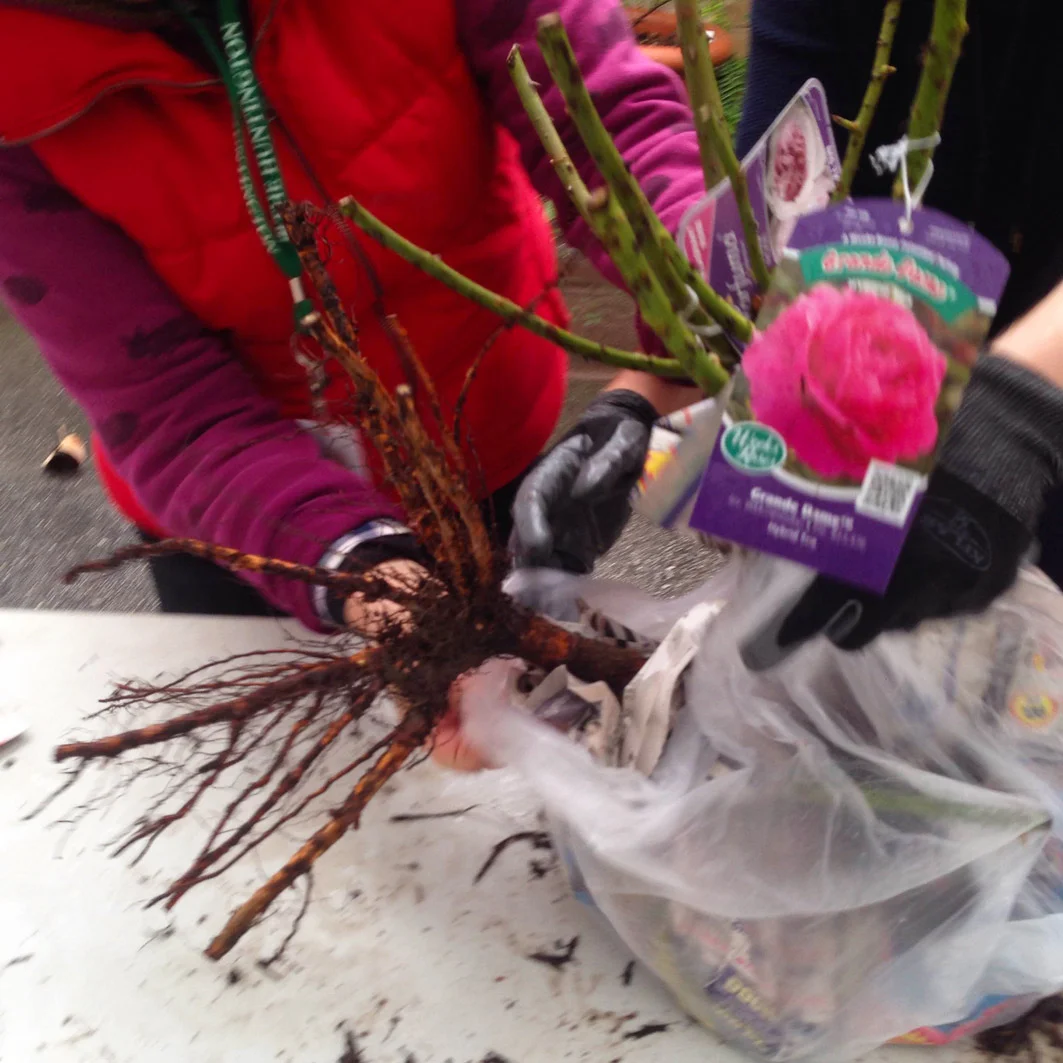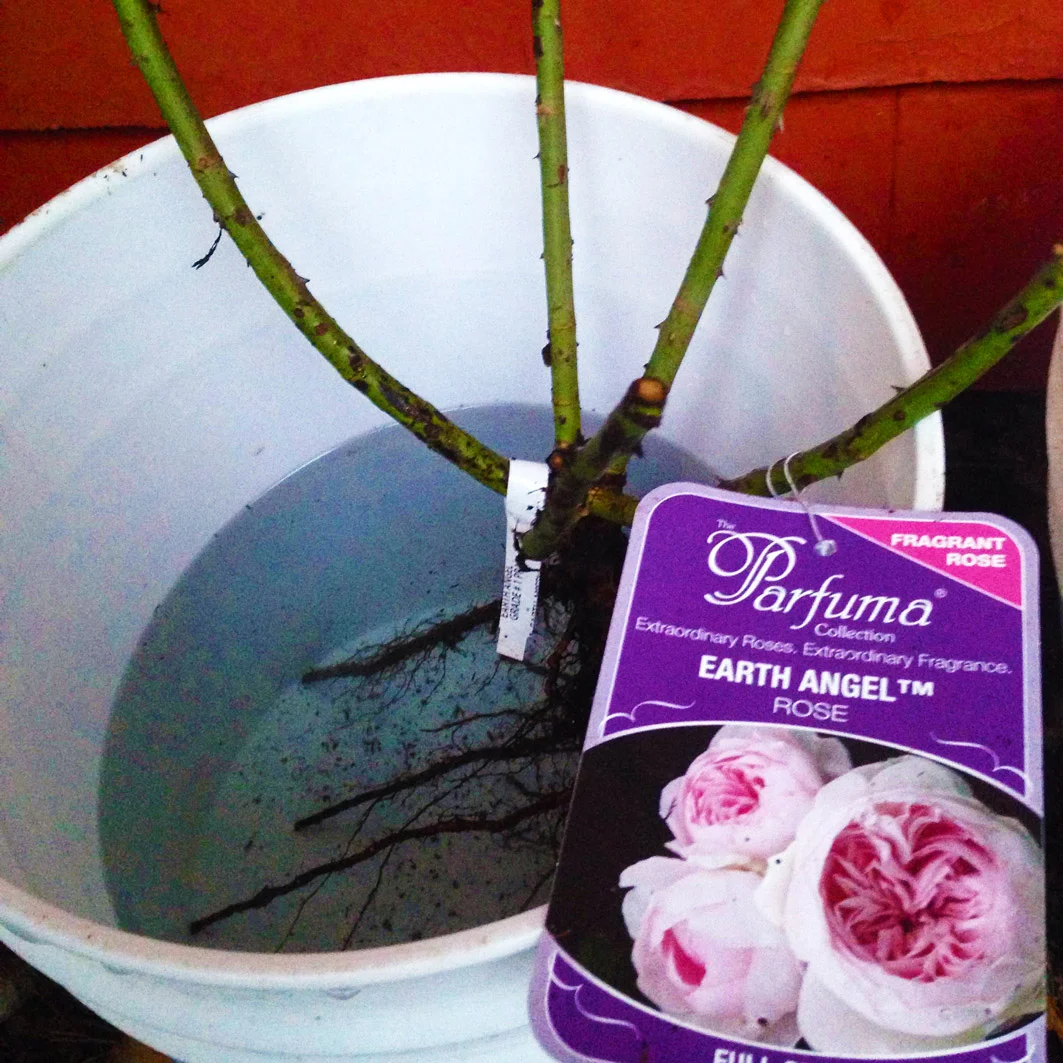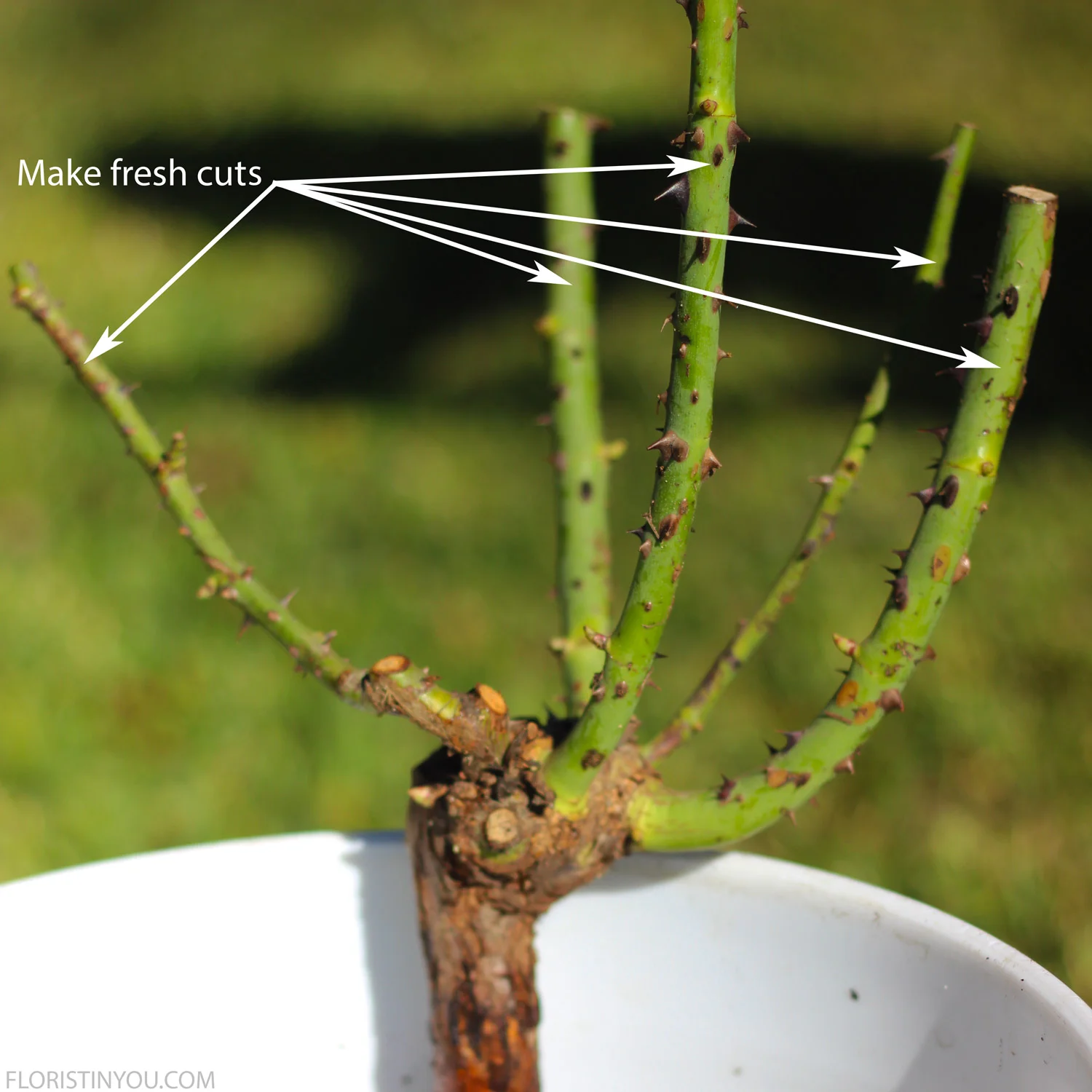Planting Bare-Root Roses
Note:
- Bare-root roses are dormant rose plants without leaves or flowers and are shipped without being planted in soil.
What you need:
- Bare-root roses (I got mine at Huntington Garden's Bare-Root Rose Sale for $18.00 each. You can buy them at your local nursery.)
- A 5 gallon bucket for each bare-root rose (from your local hardware store for under $4.00)
- Pruning shears (I use the Corona Classic Cut Forged Bypass Pruner BP 3180, at a nursery or hardware store for under $20.00.)
- Rose Gloves ( I found mine at the 99 Cent Store)
Rated: Easy
Steps: 3
I happened to glance at an out of date newspaper from the little 'All American' town nestled in the foothills of the San Gabriel Valley that I live next to and saw an article about a free Bare-Root Rose lecture at Huntington Library Art Collections and Botanical Gardens in Pasadena, California to be given the following day, so I ripped the article out of the paper, and called for specifics.
As I prepared to go, my phone went off with the beep beep beep beep of an emergency alert siren. I looked. It was a flash flood warning and rain was coming down in buckets, but I reasoned I didn't live that near the affected canyons so I ventured out anyway with my umbrella, rain coat and Ralph Lauren rain boots which I have worn now maybe 6 times living in southern California. Huntington Gardens is a favorite place to go in the Los Angeles area. It houses a library of rare books including a Gutenberg bible. It's museum's holdings include Pinkie and Blue Boy, and it's gardens boast 120 acres with 16 separate gardens including the Rose Garden, a Desert Garden, a Lilly Garden with turtles, bullfrogs and Japanese koi, and a Japanese Garden. So off I went.
It rained all through the lecture by Tom Carruth, Huntington Library's E.L. and Ruth B. Shannon's Curator of the Rose Collections, but it was given in a beautiful auditorium. He was funny and informative and gave a great Power Point presentation as everyone scribbled notes in the dark about their favorite roses that would be sold after the presentation.
Here is a recap of his main points: 1. The benefits of planting bare-root roses are that: they experience less transplant shock than flowering roses, you can easily examine their roots, and they are less expensive than flowering roses. 2. Do not expose the roots. Put the roots in a bucket of water for 24 hours after bringing them home. 3. Give a fresh cut to roots and tops before planting into the ground (try to cut above nodes) 4. Dig a hole. Move the soil around. Fill cavity with water. 5. If your bare-root roses are the type that are grafted onto a root stock, when planting the soil should be level with the bud union, where the rose is grafted onto the stalk. (That is if you are in Southern California.) 6. If it's windy and dry, cover with soft mulch. 7. The end of January is the best time of year to plant bare-root roses in southern California. They love cool wet conditions. (Yeah rain! P.S. for those living in other plant hardiness zones, check planting information for your area, but gardeners in colder hardiness zones say to plant after the last hard frost.)
Everyone scurried out at the end of the presentation and made a bee line to the conservancy where they hoped to get the first selection of roses. I looked up as we were walking and saw that we were under the watchful eye of a fat grey hawk perched in the top of a tall grey leafless tree. He watched everyone like -well like a hawk, one after the other quickly moving in a line down the sidewalk. I was told he lives in the gardens and keeps the rabbit population under control.
There were over one hundred 5 gallon buckets each with five or so bare-root roses in mulch with a photo of each rose and the name next to each. Everyone scoured their notes in the mist and hurried to find the bucket they wanted, looking for the best looking bare-root rose plants in the selected bucket with 5 or so sturdy stems. All left pleased with their prizes.
Here is a link to The Huntington's Rose Garden (You can also see navigate their site from there.) http://www.huntington.org/rosegarden/
For your reference here are some other links about planting bare-root roses: https://www.regannursery.com/page/Planting-your-Bare-Root-Roses
http://www.bhg.com/gardening/flowers/roses/planting-a-bareroot-rose/
Below you will see the step by step photos for planting bare-root roses, so if you have your roses and supplies let's begin. You can do it.












